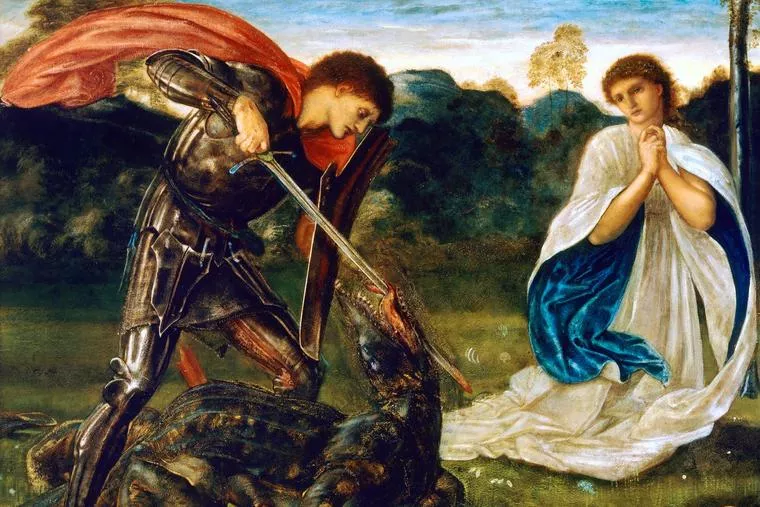St. George may be among Christianity’s most famous and beloved saints, immortalized through the famous legend of St. George and the Dragon — a tale thoroughly medieval in character in which a brave and chivalrous knight charges in and saves a fair princess from being devoured by a dragon.
In England, a country long devoted to George and one of several nations to claim his patronage, the saint’s name adorns the signs of churches and pubs in nearly equal measure. His feast day is celebrated with festivals, many of which involve reenactments of the saint’s daring feats against the ferocious dragon.
Alas for these revelers, the real St. George was not a knight, and to history’s knowledge, he did not save any princesses from a fiery death. George was a Roman soldier, condemned to torture and martyrdom during the Diocletian persecution at the beginning of the fourth century.
Tradition holds that he withstood several rounds of torture and was ultimately beheaded rather than renounce his Christian faith. He was immediately venerated throughout the Christian world as a martyr, but we know almost nothing else about him. Pope Gelasius I, who canonized him nearly two centuries later in 494, stated on the occasion that George was among those saints “whose names are justly reverenced among men, but whose actions are known only to God.”
The famed tales of George defeating a dragon did not arise until more than 500 years after his death, and no one is quite sure how a Roman soldier of near-complete anonymity metamorphosed into a dashing hero celebrated the world over for his courage. Likely it began as a fable to demonstrate the warring forces of good and evil, and soon the story obscured the true history of St. George.
We cannot say that facts do not matter, but in the case of St. George, perhaps we can argue that the particulars of his life, fantastical or otherwise, do not alter the truth for which he died. G.K. Chesterton wrote:
“Fairy tales do not give the child his first idea of bogey. What fairy tales give the child is his first clear idea of the possible defeat of bogey. The baby has known the dragon intimately ever since he had an imagination. What the fairy tale provides for him is a St. George to kill the dragon.”
The legend of George and the Dragon is not real, but the truth that it reveals most certainly is.
There is evil in the world, true evil that seeks to devour all that is good and innocent. In stories, it breathes fire and flies. In history, it can take the shape of despots like the man who ordered St. George’s death. The bloodlust of the dragon was real, even if its scales were not, and it has not died but continued to plague our world in all its insidious forms and iterations. But just as the dragon’s brutality was no fable, neither was the bravery of the man who fought it. This courageous faith in the face of evil has echoed through the centuries, to be emulated by knights, soldiers, kings, and even the children brandishing their wooden swords on St. George’s Day.
St. George surely never fought a dragon. But he did defy an emperor and stare without flinching into the eyes of his torturers and executioner, unyielding in his faith. No fair maiden awaited him at the end of his trial in life, but upon his death, no doubt, the gentle arms of Christ’s mother clasped him, bringing him to the throne room of her Son.
The presidential council of RECOWA-CERAO uses this medium to wish every George all over the world, especially members of RECOWA-CERAO a very happy feast day.
- ANNUAL WORLD CHILDREN’S DAY MARKED ON NOVEMBER 20 - November 21, 2024
- A CALL FOR RE-EVANGELIZATION OF THE CHURCH BY THE BISHOPS IN GHANA - November 20, 2024
- NEW BOOK ON CATHOLIC CHURCH’S 2025 JUBILEE BY 2 PRIESTS - November 20, 2024






